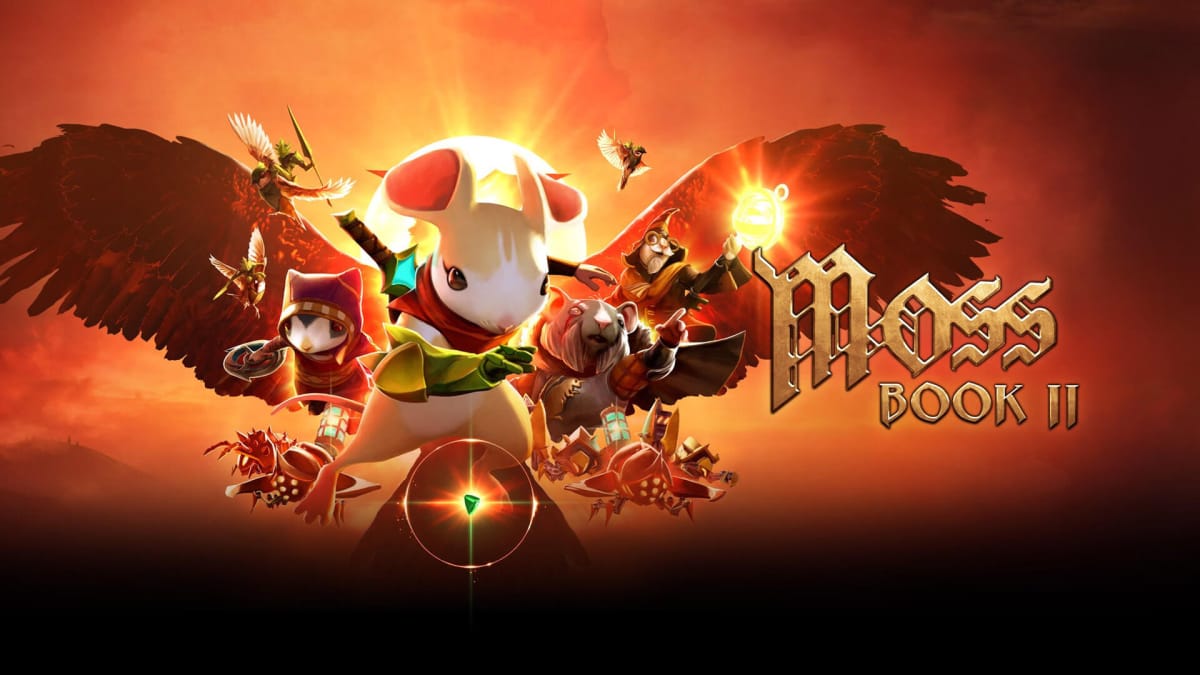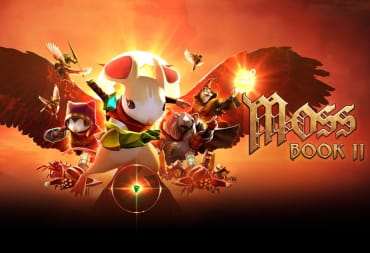The initial 2018 launch of Moss (Book I) was an interesting time for PSVR in particular. After it and Team Asobi's Astro Bot: Rescue Mission, I’d argue the platform's greater potential became more palpable for mainstream audiences. Fast-forward over three years and one pandemic later, Polyarc's sequel sets itself up as a… "spiritual capstone" to that technology in a fitting way. Stiffer competition has come along since; then again, Quill's at her best when the odds are against her.
Beginning immediately after defeating the fire-breathing snake Saffrog and saving Uncle Argus, you step into the dual roles of the mouseketeer Quill and Reader, an ethereal being who's connected to her. As the arcane forces commanded by the malevolent owl Tylan continue searching for the last glass shards, Quill and her uncle devise a plan: acquiring the relics that are still hidden to push a counter-offensive. Given the ultimate power anyone has if they acquire all five glass pieces, the stakes have never been higher.

Like the original, one of Book II's biggest story strengths comes from removing the fourth wall. As both a person reading Moss (the book series) in a library and Quill's corporeal friend/guide within those pages, you're directly interfacing with these wondrous dioramas and the larger narrative in tandem. Each loading screen to a new level (or portion of a bigger area) is disguised by your Reader turning the next page, Quill openly invites a high-five from you after clearing a major hurdle, and more little touches go a long way of entwining your connection. It's even more interesting when a surprise twist occurs and your Reader's presence is then treated with open hostility.
When looking past these aspects, it reads like a new-age Redwall novel. Anyone can intuit something is fishy when a rouge sprite conveniently show up and decides to "help" by strategically opening up new pathways leading to another glass piece. Alarm bells are quickly blaring in the background. But such expectancies make the middle-act detour all the more effective; plus, how the lore's rules are incorporated to reach said point feels natural.
Book II's burden of tying up the original's loose ends whilst expanding this world was no simple task, yet Polyarc’s storytellers make it look easy. It's not free of critiques (like a secondary character's change of heart feeling too rushed), but any valid ones are outclassed by its sincerity and presentation. The way VR corresponds with this story, as you inhabit this book series while listening to Morla Gorrondona's euphonious narration, goes a long way. How this creative framework is used to maintain good pacing and climactic moments kept me occupied from beginning to end.

Book II expands its verbs just as much as its nouns. The original game's Quill-Reader dyad remains intact: Quill's actions are centered on typical controller inputs while Reader's influence comes through motion controls and the L2/R2 shoulder buttons. Whereas Quill physically explores and fights within a 3D space, Reader will move highlighted objects, revive Quill's health, and magically grapple unshielded minions. During more casual moments, Reader's abilities extend to temporarily reviving leafy vines for wall-scaling and fabricating bridges as well.
Where expansions are most felt is in its arsenal. Beyond the new wonderfully-expressive animations and tactical situations Quill will find herself, her weapon roster is also beneficial for puzzle-solving: her charged-up sword dash enables her to cross large gaps, a charged chakrum will stick to damaged surfaces until being called back (a la Yondu's Arrow), and likewise, a charged spectral hammer will hover in place to hit pressure plates or break armored enemies. Since it demands both parties to work, Quill holding up the weapon and Reader activating said charge, it presents a neat risk/reward dynamic during combat dilemmas.
On this info alone, you’re likely internalizing the newfound potential with puzzle-platforming and combat. Even though Quill's combat vocabulary is still a button-mashing and dodge structure – perhaps toss in an aerial strike, incorporating Reader's moves adds a different dimension. Quill won’t often be in rough straits (especially with unlimited health replenishes), but the fun of deftly juggling both protagonists at once feels rewarding by itself. There’s a modest skill ceiling between amateur to untouchable melee mice-tro. Similarly, with puzzles, Polyarc places a heightened emphasis on utilizing every tool at your disposal when appropriate.

While Book II is an incredible technical accomplishment on PSVR, it's tough to disregard its limitations. This last-gen platform is backwards compatible with PS5, but still stringently demands a Dualshock 4 to gauge depth with the PS Camera. This isn't a major hurdle on its own, but Reader's UI icon can act nettlesome within expansive levels. Some inconvenient spots, especially when Quill's at a distance, can be a bit finicky to grab an enemy or activate a weapon charge.
Regardless of aging tech, Polyarc's animation wizards and artists earn their keep. From smaller touches like Quill's and Uncle Argus' distinctive tail physics to larger creatures incorporated in the background, there's a commendable dedication to detail. Each move, be it a jump or a sword slash, has a proper sense of weight for this petit warrior. When considering the big picture, Book II goes beyond the original's maquettes and crafts full-blown interconnected levels. Even though I often get woozy in VR, I couldn't help but constantly assess the vast expanses in my periphery or shift myself around a diorama to potentially spot a hidden collectible page.
Like virtually every sequel, Book II's all about delivering more stuff. From its greater variety of environs and weapons to its more expansive soundtrack and audio design, Polyarc knows what you enjoyed the first time and wants your stay to last longer. Although I don't discount these boons, there's also a danger in that impulse. Combat has been improved, but enemy variety still fizzles out too quickly. The puzzle difficulty curve is somewhat disappointing too: ever so slowly creeps upward in challenge and then runs past its best concepts towards the end. It's one of those conundrums where despite getting more you still don't quite feel as though its new bag of tricks was fully explored.
Moss: Book II Review | Final Thoughts

A lot of time has passed since Polyarc's first title, especially so for VR. Technological leaps happen at a faster rate and new tentpole titles release more frequently. In this context, I think of Moss: Book II as an immensely respectable continuation of the previous framework while not quite ascending the fantastic heights that are within reach. Regardless, I also can't forget how it has revitalized my excitement for VR altogether.
It might not boast the widest breadth of content nor insane mechanical complexity, but a rare few titles can dare to match its earnest warmth and overwhelming charm.
TechRaptor reviewed Moss: Book II on PlayStation VR with a copy provided by the developer. It is also available on Meta Quest 2.
Review Summary
Pros
- Grand & Ensorcelling World
- Well-Told Fantasy Yarn
- Expertly Implements VR With Puzzle-Platforming
- Exciting Boss Battles
- Technical Visual & Audio Wizardry
- Exceptional Storybook Narration
Cons
- Some Annoying Depth Detection Issues (PS Camera)
- Lackluster Enemy Variety Leads To Sense Of Repetition
- Could've Explored Its Best Concepts A Bit More
Have a tip, or want to point out something we missed? Leave a Comment or e-mail us at tips@techraptor.net








